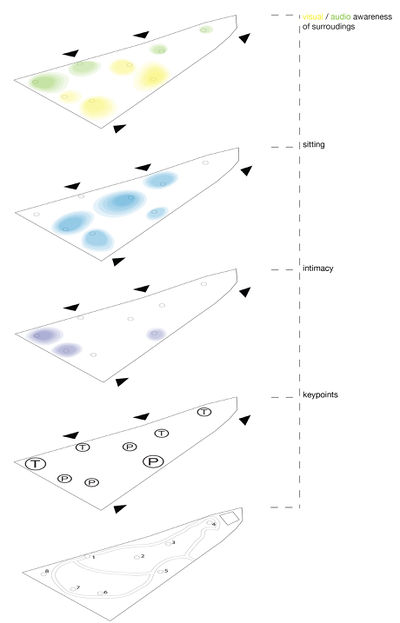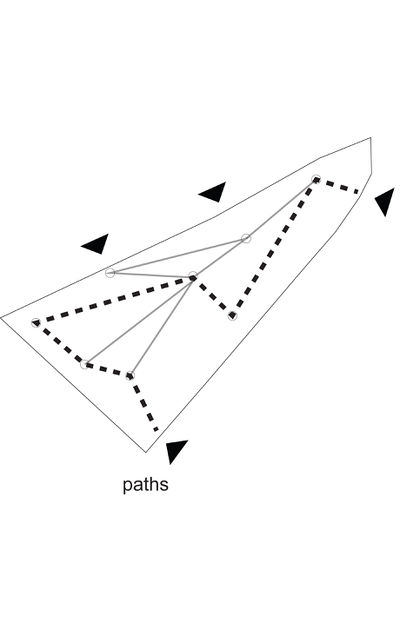project D:Home
Contents |
sounds of the non-park
"experience is the crystallization in a field of raw sensations - aromas, colours, textures, fears; which are held together by habit. Habit is a non-linguistic repetition of ideas in everyday life." - Manuel De Landa
User's meaning of a park include fixed ideas such as green, open, tweeting, serenity, companinionship etc. These create a specific definition of a park. Every time the word park arises, these exact memories are recalled; but what is missing in the user's association for the De Vries van Heystplantsoen,an urban site, is the idea of a car, meaning both vision and sound. Because the noise of traffic is foreign to their basic meaning of park, they are disturbed by the actual reality.
The project's intention is to include the car into the user's combination of ideas of an urban park. Since the main contradiction is due to sound, the project will revert the negative perception of noise into a positive aspect of an urban park, furthermore add the idea of traffic into the habit of urban park.
psychoacoustics
Psychoacoustics is the scientific study of sound perception. More specifically, it is the branch of science studying the psychological and physiological responses associated with sound.
experimenting
In order to understand the immense potential of psychoacoustics and its effect for The De Vries van Heystplantsoen intervention, project D organized a series of experiments to get a sense of the most extreme spatial sound scenarios- an anechoic chamber (wave reflection free) and an echo room. By identifying their spatial and experiential characteristics, the project can apply sound/space/experience variation to the 8 points developed as atom 3.
conclusions
1. Sound clarity can be more effective in a space that absorbs sound. Partial absorption of external sound in comfortable / permanent areas can be applied to create collective spaces and areas for speech purposes.
2. Intimacy is supported by absorbing surfaces inside a space.
3. A room with constant reflection is relatively more disturbing than a room with constant absorption. Areas with with higher reflectivity can only be transitional.
4.Disturbing frequencies in normal conditions, are attenuated and more tolerable in a anechoic chamber.
5. Because of the lack of background noise in the anechoic chamber, its possible to perceive the blood pressure pounding in the ears, which is similar to an "after concert" ringing. Ambient noise does not translate directly into annoyance
6. In both extreme conditions it is difficult to estimate the features of a space. That is why these extreme situations will not be implemented in our project. orientation, flow, and transition are very important. In the anechoic chamber you are able to determine the angle, but not the distance of the source, regardless of light conditions.
7. Disturbance by noise is relative to immediate previous experience, this was seen after leaving the anechoic chamber, the initially ordinary level of sound in the transitional space that proceeded the chamber, was a welcomed relief after the experiment was completed, therfore . Similar spaces/experiences should not be adjacent.
programming
image quality needed...add description of diagrams. from diagrams to path?

